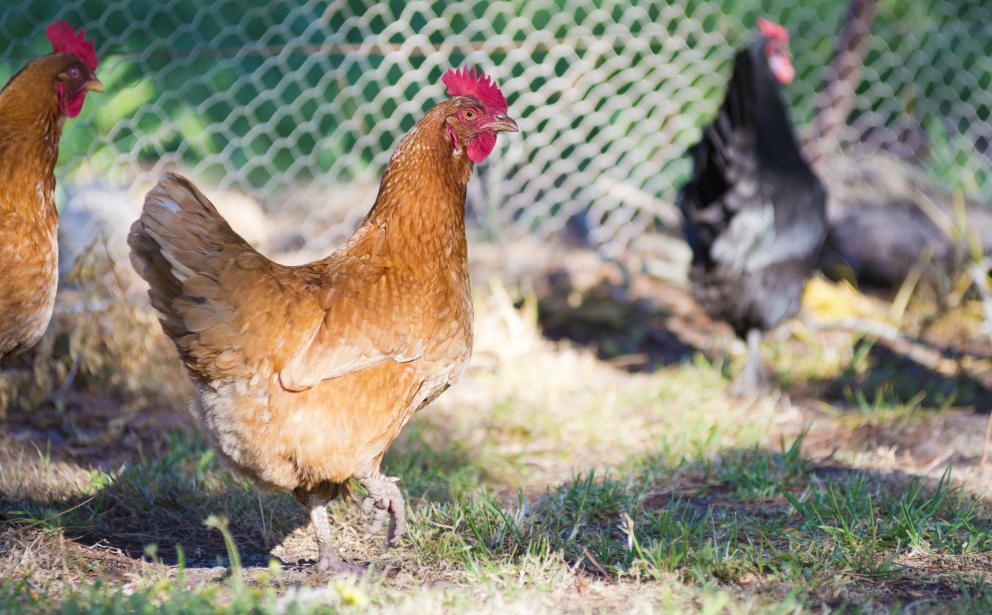You are here
Animal Welfare vs Animal Rights

Why do some groups talk about animal welfare while others talk about animal rights? The two terms have a lot in common and are really different philosophies along a spectrum of all those who care about animals. The treatment of animals is complex involving many factors including: human emotions, current societal norms, as well as historical practices, cultural habits and behaviours, and religious beliefs. Just think of different sectors of humanity: some keep animals as pets, and many humans eat animals as a source of protein. There are wildlife photographers and wildlife hunters. There is a continuum of human behaviour from using animals in any way they would like to animals having the same rights as humans. Veterinarians and veterinary technologists also fall on this continuum.
Animal Welfare
The World Organisation for Animal Health (OIE) defines animal welfare in the OIE Terrestrial Animal Health Code: “Animal Welfare means how an animal is coping with the conditions in which it lives. An animal is in a good state of welfare if (as indicated by scientific evidence) it is healthy, comfortable, well nourished, safe, able to express innate behaviour, and if it is not suffering from unpleasant states such as pain, fear, and distress. Good animal welfare requires disease prevention and veterinary treatment, appropriate shelter, management, nutrition, humane handling and humane slaughter/killing. Animal welfare refers to the state of the animal; the treatment that an animal receives is covered by other terms such as animal care, animal husbandry, and humane treatment”.
Animal Rights
Animal rights is a philosophical view that animals have rights similar to or the same as humans. It follows that animals should not be regarded as property and any use of animals is unacceptable. Canadian lawyer Leslie Bisgould in her 2011 book Animals and the Law defines animal rights as “a term embodying the idea that animals, as sentient beings, are entitled to not be considered things people own and use for their own purposes, or as means to human ends; the movement to liberate animals from human exploitation.” In the extreme, the animal rights movement protests keeping animals as pets.
As humans we rationalize how, as omnivores, we eat, whether it be as meat-eaters, vegetarians, or vegans. If we eat meat we should want the best possible care for animals as they are raised and as they are slaughtered for food.
Just as we wish for ourselves, we also wish that animals are comfortable in their final moments of life. That is the philosophy of many veterinarians and why they perform euthanasia when it is needed. Food producing animals are no exception.
Five Freedoms
The veterinary profession focuses on caring for animals. The ‘five freedoms’, which were originally developed by the UK’s Farm Animal Welfare Council (FAWC), are referenced by the World Organization for Animal Health (OIE), of which Canada is a member, in its Terrestrial Animal Health Code (Section 7 - Animal Welfare). The five freedoms provide an internationally recognized benchmark for animal care:
- Freedom from hunger and thirst – ready access to water and a diet to maintain health and vigour
- Freedom from discomfort – by providing an appropriate environment including shelter and a comfortable resting area
- Freedom from pain, injury and disease – by prevention or rapid diagnosis and treatment
- Freedom to express normal behaviour – by providing sufficient space, proper facilities, and company of the animals own kind
- Freedom from fear and distress – by ensuring conditions and treatment which avoid mental suffering
The following quote from the World Veterinary Association summarizes the factors that veterinarians and veterinary technologists consider in their daily work with their animal patients and human clients: “The World Veterinary Association, as the global representative of the veterinary profession, recognises the global influences on animal welfare and the changing role of the veterinarian in response to the changing attitudes of the human population. While urban populations are now dictating animal welfare standards, many practices still have a cultural and even religious basis. Veterinarians recognise these influences, but base their recommendations for animal welfare on scientifically justified practices. Veterinarians work not only for urban clients with their companion animals, but also very importantly with rural clients who provide the source of animal-based foodstuffs and goods sought by an increasingly demanding human population. The controversial areas of intensive animal production and the transportation that is required to move large numbers of animals around the world require veterinary supervision to ensure that animal welfare is preserved. The development of animal welfare standards is an ongoing process, with the major international effort being led by the World Organisation for Animal Health.
Additional Resources:
Animal welfare: At the interface between science and society
Definition of criteria for overall assessment of animal welfare
A Scientific Conception of Animal Welfare that Reflects Ethical Concerns
Infographic by the World Association for Animal Health
Fact Sheet by the World Association for Animal Health
Recommended Reading:
Encyclopedia of Animal Rights and Animal Welfare by Marc Bekoff
Some We Love, Some We Hate, Some We Eat by Hal Herzog
Video:
Animal welfare and the ethics of animal use – video of Dr. David Fraser, Order of Canada
